This past fall, Marcellas Reynolds released ‘Supreme Models: Iconic Black Women Who Revolutionized Fashion,’ a book highlighting over 70 Black women who have made the industry what it is today.
Marcellas Reynolds, best known for his work in television, making appearances on shows such as The Tyra Banks Show, E! News, and Good Day LA, has become known as the “walking, talking fashion Wikipedia.”
We’re given a moment to dive into what inspired him to create this book and look into high turning points in the history of fashion through stunning imagery.
“Let me be direct. It’s not lost on me that it took a Black, gay man to create a book celebrating the beauty of the Black woman. Historically the Black female’s story has been told through the lens and biases of the White, straight male.”
– Marcellas Reynolds

Photograph by Txema Yeste / Trunk Archive
Interview
Supreme Models is the very first book of its kind. Truly monumental. What made you realize that this book was necessary–that it needed to exist?
In the spring of 2011, Vogue Model: The Faces of Fashion, a book dedicated to models who appeared in British Vogue, was released. The book, which spanned the 90-year history of British Vogue, arguably the most diverse fashion magazine in the world, only included two Black models—Iman and Naomi Campbell.
In 1966, British Vogue was the first Vogue to put a Black model, Donyale Luna, on the cover. That’s eight years before American Vogue put Beverly Johnson on its cover!
Angered, I wrote a scathing review of the book on Amazon; “Where is Veronica Webb, muse to Herb Ritts, who is one of the few Black models ever to receive a cosmetics contract? Or Liya Kebede, the current face of Estée Lauder, who had an entire issue of Vogue Paris dedicated to her. And where is Tyra Banks? The model mogul! Few models have been more successful than Tyra!” That lack of recognition of the triumphs, that’s why I wrote Supreme Models.

January 2013 © Laurent Elie Badessi
In being inspired to create this book, how did you begin the process, and what were some deciding factors in selecting final images?
I knew there were enough successful Black models who had made an impact on fashion and culture. I compiled a list of over 100 top models. From that list, I began contacting models I knew or could meet through friends. It wasn’t easy. Many models said no to interviews or had retreated from public life. However, since this is an art book, the conversations, which are amazing, were secondary to the photographs.
Once we chose what models were in, we selected their pictures. It came down to what we could clear, the cost, the importance of the photographer, and the publication the photos ran in. We wanted top-tier FASHION magazines.
You recently spoke about how seeing Black women in magazines as you were growing up was an inspiration to you, and you want this book to be a beacon for others. What are some opportunities you see in the fashion industry that has not changed or created waves of influence that need addressing?
As a fashion stylist and former model, I’ve been on many sets and seen the mistreatment of models and people of color. We’re often paid less for the same work. I’ve seen models be told by White hair and makeup artists that they couldn’t do our hair or didn’t have makeup for our skin tones, as though their lack of skill was somehow our fault. But still, we thrive. I created a book that celebrates our successes.
We need more hair and makeup artist of color. We need more Black designers, art directors, photographers, and decision-makers at the design houses, production companies, and publishers. Would the Gucci sweater gaff had happened had a person of color worked there? I think not!

The LIFE Premium Collection / Getty Images
You’ve gone further and brought attention to Black photographers in the book as well. Is there a different translation of a concept through the lens of a Black photographer on a subject? Why is this important?
Let me be direct. It’s not lost on me that it took a Black, gay man to create a book celebrating the beauty of the Black woman. Historically the Black female’s story has been told through the lens and biases of the White, straight male. If there is one group that cannot be trusted telling any story, it’s them. That said, fashion is a celebration of beauty, and most of the people who work in fashion do not have a racial bias as it pertains to creating something beautiful. It’s when money becomes a factor, that changes. Then the conversation becomes, frankly, ignorant. “Do black models on the cover sell magazines?” “Does this designer want certain communities wearing their clothes or buying their products?” Ridiculous.
Fashion loves new, and we are always looking for what’s next. It’s time for new photographers, art directors, stylists, etc. to test the boundaries of what’s fashion(able). I look forward to seeing how female photographers and photographers of color interpret fashion.
If you were to name a few models that people may not know much about today, who would they be, and what have they done that was groundbreaking?
Donyale Luna was the first Black woman to appear on the covers of Harper’s Bazaar and British Vogue. She was a muse to Richard Avedon and David Bailey. She’s the first Black supermodel. Naomi Sims! Naomi was the first Black model to appear on the cover of Life magazine, and more importantly, Ladies’ Home Journal. That doesn’t seem like a big deal now, but in 1968 LHJ had a circulation of 14 million readers.
Seeing a dark-skinned model on that magazine was huge. Many say Naomi was the first black supermodel, but I’m sticking with Donyale. She was the essence of fashion.

Elle US, April 1990 © Nathaniel Kramer
What is one of your favorite images in the book? What meaning does it have for you?
The Steven Meisel photo of Naomi Campbell is my favorite fashion image ever. It’s Naomi in Vogue Italia at the height of her power. The body, face, skin. She’s the queen. Steven gave me the photograph for free. But my absolute favorite picture in the book is the cover of Jeneil Williams. It’s stunning.
When my sister, who has dark skin and natural hair, saw it, she began to cry. She said because she was dark, she never thought I found her beautiful. By putting a woman that looks like her on the cover of my book, she realizes she was wrong. That’s powerful.

You have gone back over the past 70 years of Black women in fashion. Why was this timeframe important? What are some commonalities that you see in the women from then to now? (Styling, presentation, challenges, misconceptions, etc.)
We start the book with covers from Ebony and Jet. Ebony began publication in 1945, and that’s where the story of the Black model begins. Ebony created a need for beautiful Black models, presenting them in a groundbreaking manner. It’s important because, before Ebony, the presentation of Black models was not beautiful or equal to their White counterparts.
The Black model brings life to fashion. No other model poses, walks, or inhabits fashion that way. Just watch a fashion show with Naomi, Roshumba, Tyra, or Veronica, and you’ll see no one is better at bringing the dream that is fashion to life than a Black woman.

August 1977 Ron Galella / Getty Images
What advice would you give to those aspiring to be a model or be involved in the fashion industry today?
I have so much reverence for fashion and models. For want-to-be models, if you pick up a major magazine and see a model that looks like you, that is the same age, height, and size as you, then you may have a shot. If not, don’t break your own heart. There is very little money in fashion anymore, with an estimated 5% of agency represented models making a living wage. Need to be told you are pretty? Forget it. The hardest part of modeling is the constant rejection.
You cannot have an ego or thin-skin to be a model. If I wanted to start in fashion today, I’d go to hair and makeup school. I have so many friends of color who are killing it in the hair and makeup game. Black actors and models are now requesting skilled Black talent to do their hair and makeup. It’s about time.
Images provided courtesy of Marcellas Reynolds for this interview.
Want the latest posts, offers, and exclusive content straight to your inbox? Subscribe to our newsletter and never miss out again. See more Fashion here.


